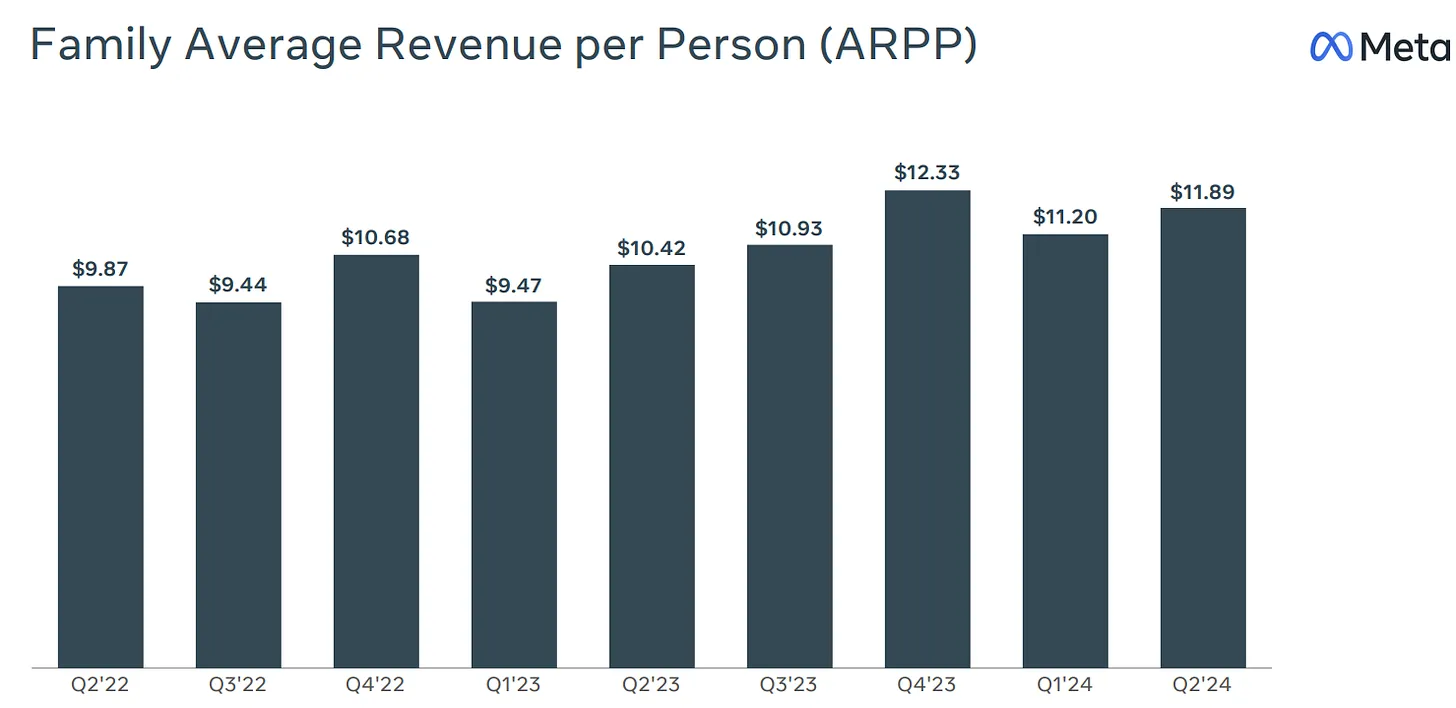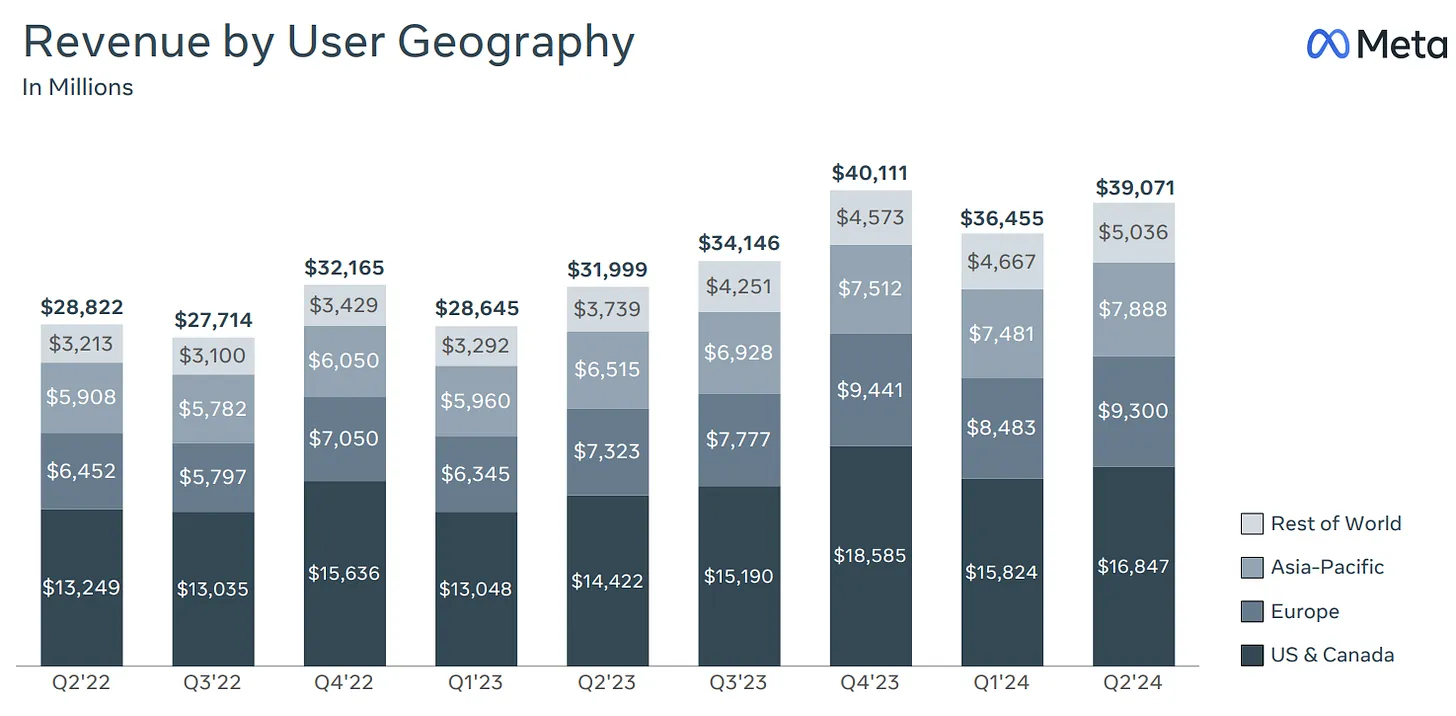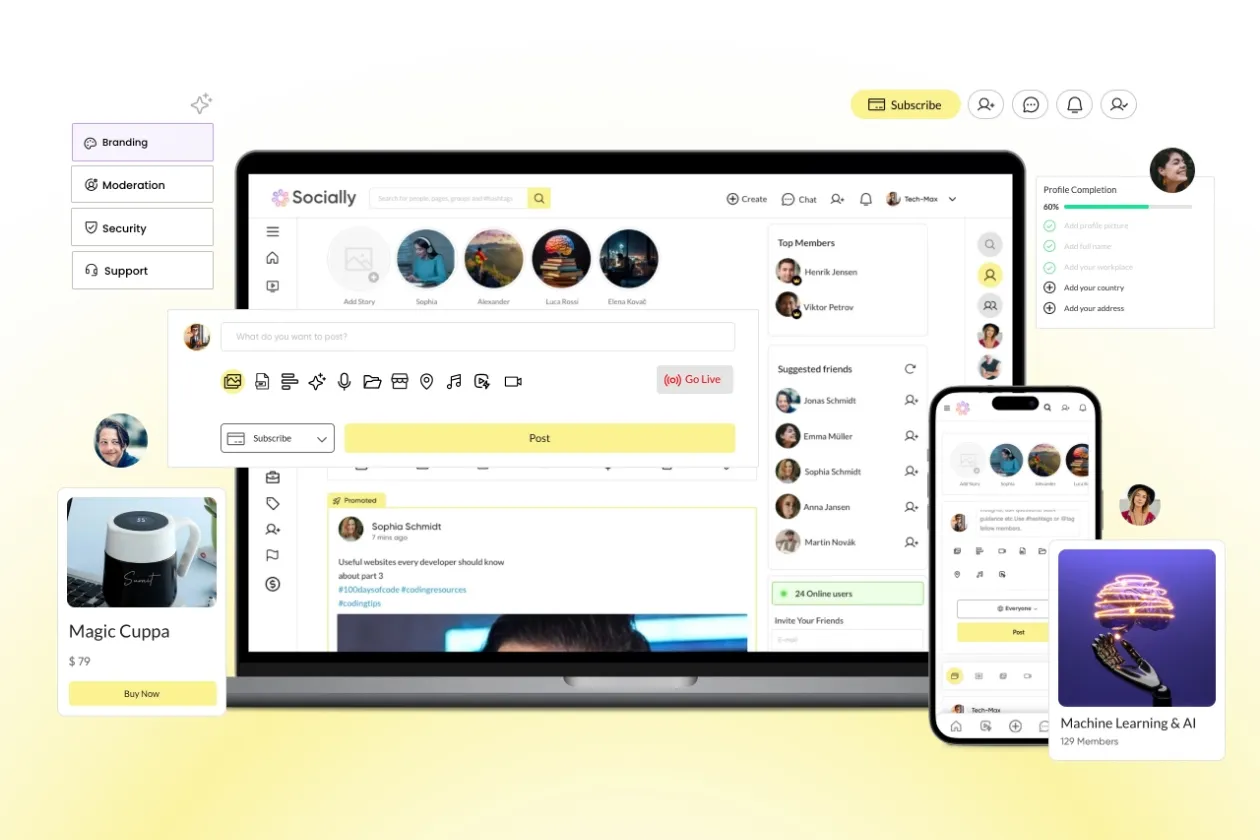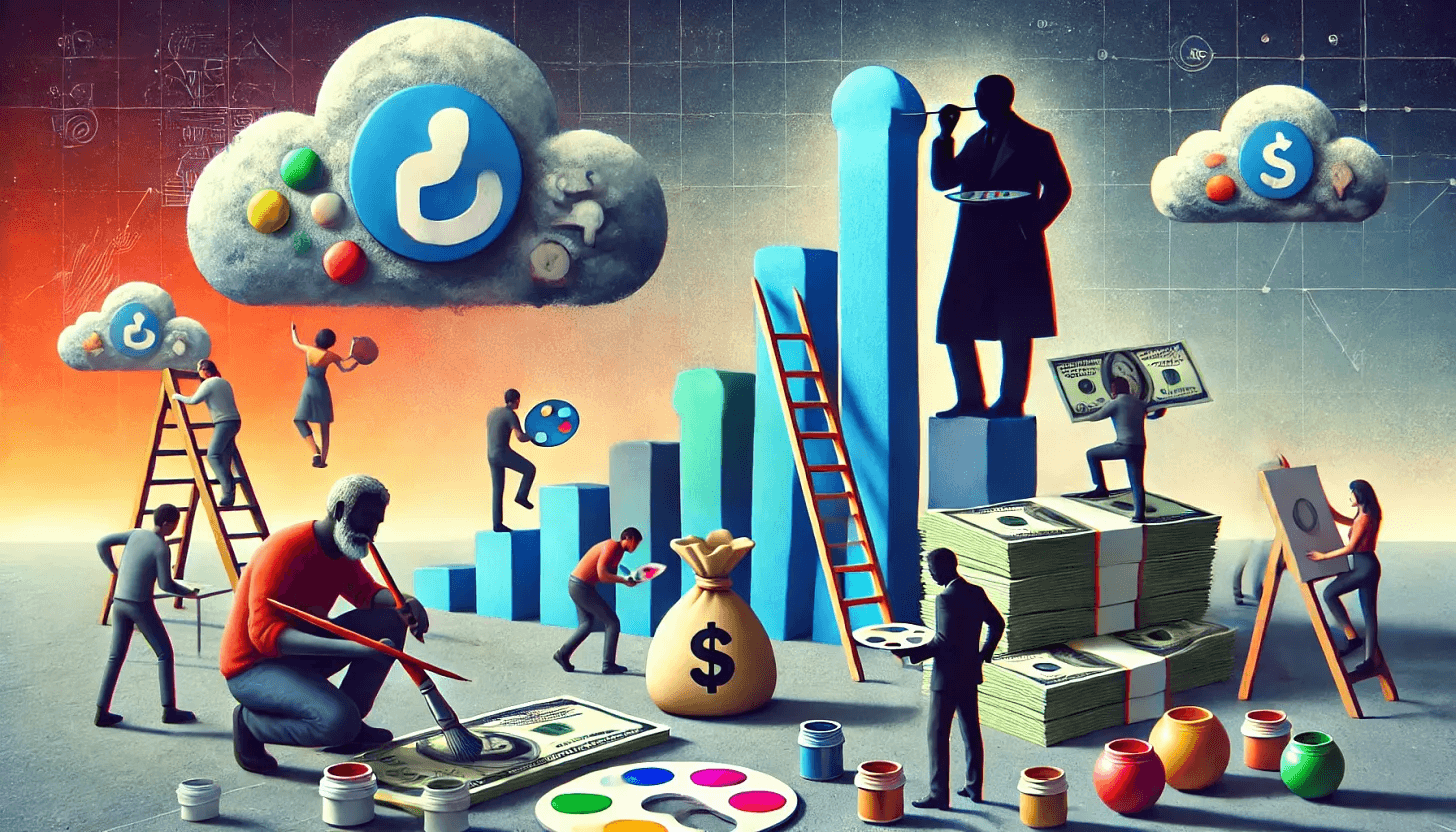Platforms like YouTube, Instagram, and TikTok act as gatekeepers, controlling how, when, and to whom your content is distributed.
1. The Platform-Creator Power Dynamic
The relationship between platforms and creators is fundamentally skewed in favor of the platforms. Platforms offer creators visibility and a place to share their content, but the trade-off often comes at a high cost. Platforms like YouTube, Instagram, and TikTok act as gatekeepers, controlling how, when, and to whom your content is distributed. Creators become dependent on these platforms for visibility, audience growth, and income.
While platforms profit through ads, data collection, and sponsorships, creators are often left fighting for scraps. Consider this: less than 10% of revenue made by platforms is shared with creators. Even on platforms that offer revenue-sharing models, such as YouTube, creators receive only a fraction of the total income generated from their content. This means platforms are cashing in on the creator’s hard work while creators struggle to earn a sustainable living.
2. Algorithms Favor the Platform, Not the Creator
The infamous algorithms of social media platforms play a massive role in this imbalance. These algorithms dictate what content gets seen, and they’re designed to maximize the platform's profit, not the creator's. This often leads to creators churning out content in a race to keep up with changing algorithms, trying to remain visible. The result? Platforms make money from ads and user engagement, while creators are trapped in a cycle of content creation with little financial return.

Meta makes approx 11.89$ per user per month
3. Ad Revenue Doesn’t Cut It
For most creators, the primary source of income on platforms is through ads—whether it’s YouTube’s AdSense program or Instagram’s sponsored posts. But ad revenue is notoriously unpredictable, often fluctuating based on changes in the algorithm, advertiser demand, or even seasonality. For example, a video that gets 1 million views on YouTube might earn anywhere from $500 to $2,000 depending on factors outside the creator’s control. This uncertainty makes it difficult for creators to predict and maintain consistent revenue streams.

39BN$ Q2 2024 Revenue
On top of that, platforms take a significant cut of the ad revenue—YouTube, for instance, takes 45% of all ad earnings. This means that while platforms continue to rake in billions from ad sales, creators see only a small fraction of that.
4. Data Control and Monetization
One of the biggest assets platforms have is data. Every time a user interacts with a creator’s content, the platform collects valuable data, which is then used to target ads and optimize the user experience. This data is incredibly profitable for the platform, but it’s something creators rarely, if ever, have access to. Platforms know who’s watching, how they’re engaging, and what they’re likely to buy next, yet creators are left in the dark about their own audience beyond basic metrics like likes and views.
This lack of control over data severely limits creators' ability to grow their business and engage their audience more deeply. In essence, platforms are profiting off creators’ hard work, audience, and data—without giving much back in return.
What’s Wrong with the Current System?
The platform-creator relationship is flawed for several reasons:
Creators are underpaid: Most creators struggle to make a sustainable income from platform revenue models, despite dedicating significant time and effort to creating content.
Creators have no control: Platforms control the algorithms, data, and distribution, leaving creators with little say over how their content reaches their audience.
It’s unpredictable: Algorithms change, ad revenue fluctuates, and creators have no guaranteed way to maintain a steady income.
Creators are replaceable: Platforms are always looking for the next viral star, making it easy for a creator to be pushed out of the spotlight if they’re not consistently performing.
This system leaves creators vulnerable and dependent on platforms that are motivated by profit, not by the creators' success. Fortunately, there’s a solution that puts creators back in control—building your own community.
How Creators Can Take Control by Building Their Own Community

Using platforms like socially, kajabi, circle & mighty can help creators gain control.
So, how can creators break free from this platform dependency and take control of their future? The answer lies in building your own community platform—a dedicated space where you can engage your audience directly, own your content, and establish sustainable revenue streams without relying on third-party platforms.
Here’s how:
1. Own Your Audience
When you build a community platform, you no longer have to depend on Instagram’s algorithm to decide who sees your content. Instead, you can engage directly with your audience on your terms. This means you’ll have full control over how and when your audience interacts with your content, ensuring that you’re not at the mercy of algorithm changes.
Owning your audience also gives you access to valuable data—data that platforms usually keep to themselves. You’ll know who your audience is, how they engage, and what they want, allowing you to personalize your content and build deeper connections.
2. Diversify Your Revenue Streams
One of the biggest advantages of building your own community is the ability to create multiple revenue streams. Instead of relying solely on unpredictable ad revenue, you can offer paid memberships, exclusive content, courses, merchandise, or even events. The possibilities are endless, and the best part? You keep the majority of the profits.
Here are a few ways to monetize your community:
Paid Memberships: Offer your most loyal fans exclusive access to premium content, private chats, or behind-the-scenes looks for a monthly fee.
Courses and Workshops: If you’re an expert in a particular area, why not offer courses or workshops? Your community members are already engaged and interested in your content, so they’re more likely to invest in educational products.
Exclusive Merchandise: Your dedicated community is the perfect place to sell branded merchandise or limited-edition products that align with your content and values.
Affiliate Marketing and Sponsorships: You can also partner with brands for sponsorships or promote products through affiliate links within your community, but with more control over how and when you present those products to your audience.
3. Keep 100% Creative Control
On platforms like YouTube or Instagram, there’s always pressure to conform to what’s trending or what the algorithm favors. This often means sacrificing creativity for visibility. When you own your community, you make the rules. You can create content that aligns with your values and passions without worrying about how it will perform in the algorithm.
You’re free to experiment with different content formats, build meaningful relationships with your audience, and create content that’s authentic to you. This creative freedom allows you to build a brand that’s aligned with your vision, not what the platform dictates.
4. Engage Your Audience on a Deeper Level
Social media platforms are designed for short, fleeting interactions—quick likes, comments, or shares. A community platform, on the other hand, is designed for meaningful engagement. Whether it’s through discussion boards, live events, or in-depth content, your audience can engage with you and each other in more valuable ways.
By creating a space where your audience can connect with you on a deeper level, you’re not just building followers—you’re building a community. This deeper connection leads to stronger loyalty and higher retention, as your audience feels invested in what you’re creating.
5. Control Your Data
One of the most powerful aspects of building your own community is having control over your data. You’ll know exactly who your audience is, what they engage with, and how they interact with your content. This data allows you to better understand your audience’s needs, tailor your content, and offer personalized experiences that platforms simply can’t provide.
By owning your data, you’re no longer reliant on platforms to grow your audience. You can make informed decisions, improve your content strategy, and ultimately build a stronger, more loyal community.
Conclusion: It’s Time for Creators to Take Control
If you’re tired of putting in all the hard work while platforms profit from your creativity, it’s time to take control of your future. Building your own community platform gives you the freedom to own your audience, diversify your revenue, and create meaningful connections on your terms.
Platforms like YouTube, Instagram, and TikTok will always be part of the equation, use them to increase reach & visibility but by establishing your own community, you can reclaim control over your content, income, and creative process. It’s the next step in evolving from a content creator to a brand owner—one who thrives independently, not at the mercy of algorithms or platform rules.
So, take the leap. Your community is waiting, and so is your chance to build something truly yours.




